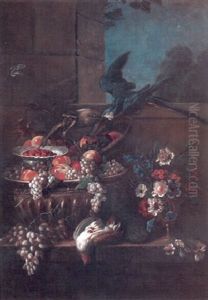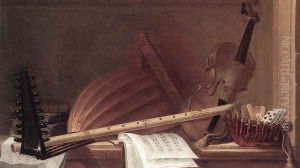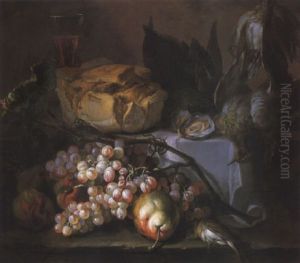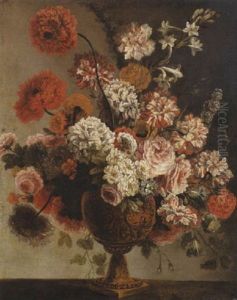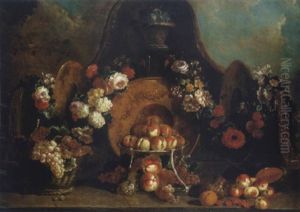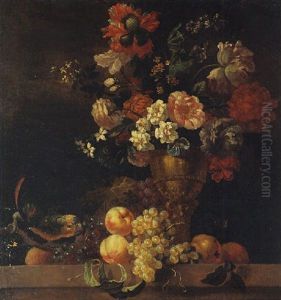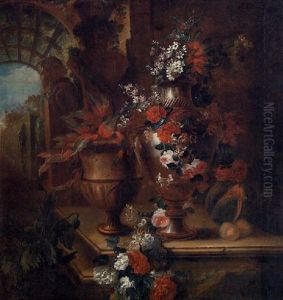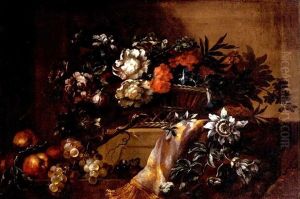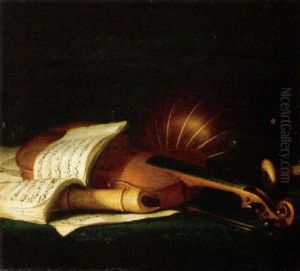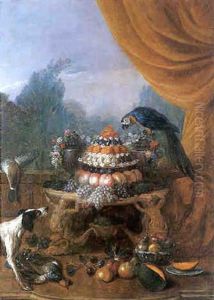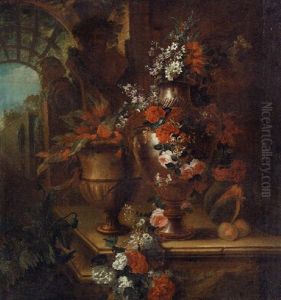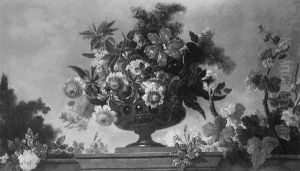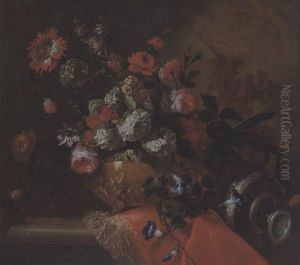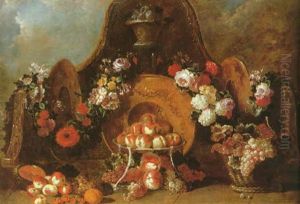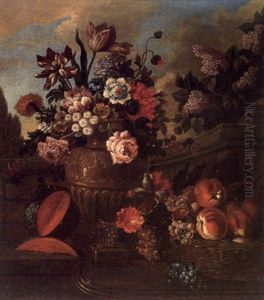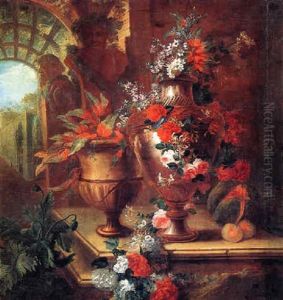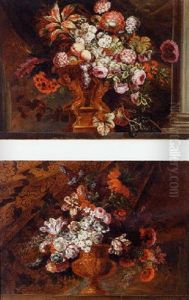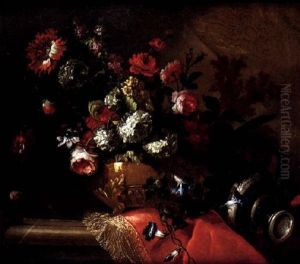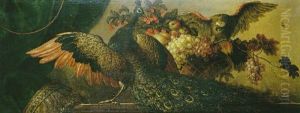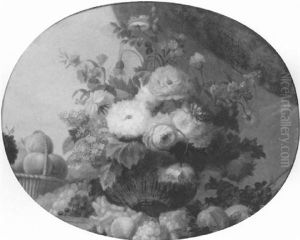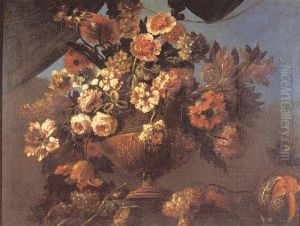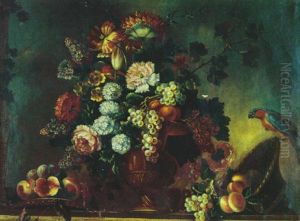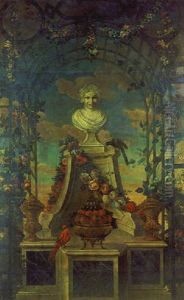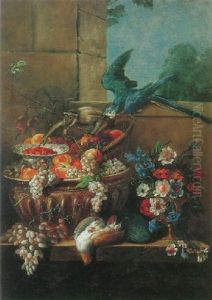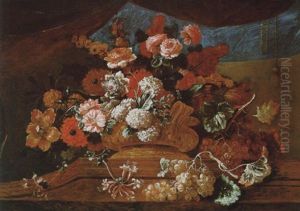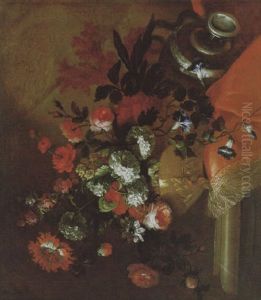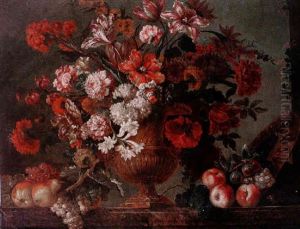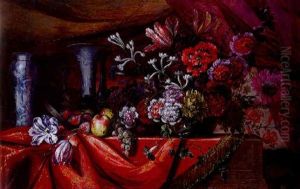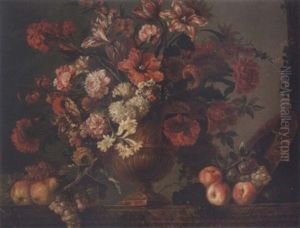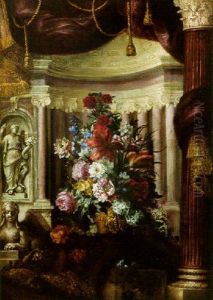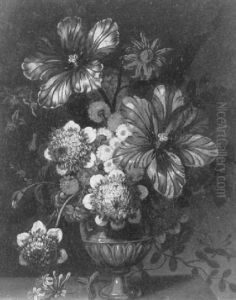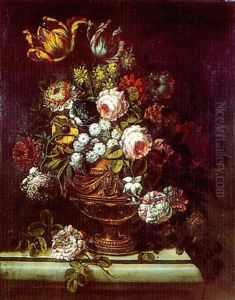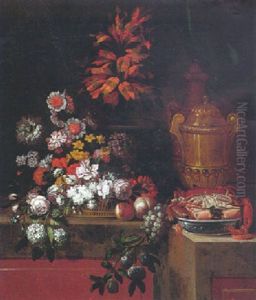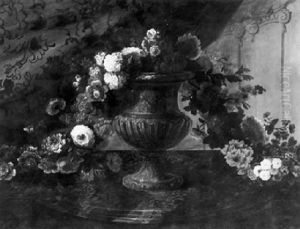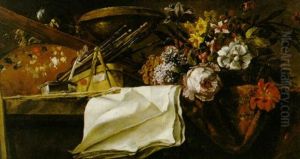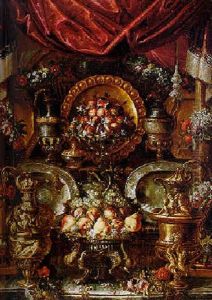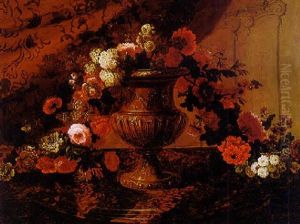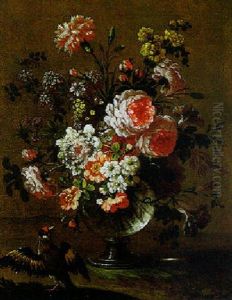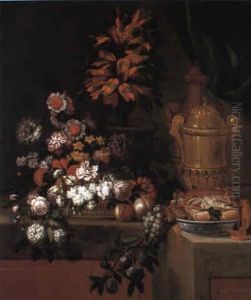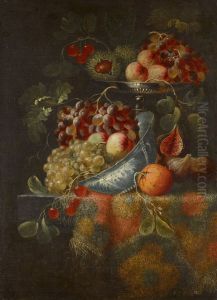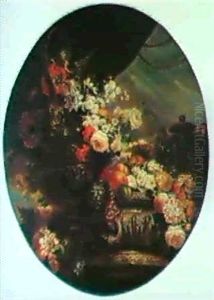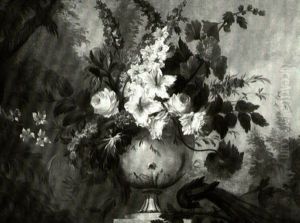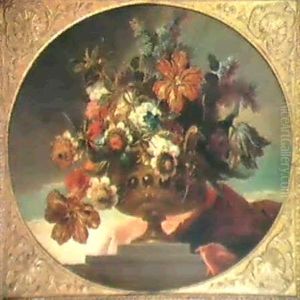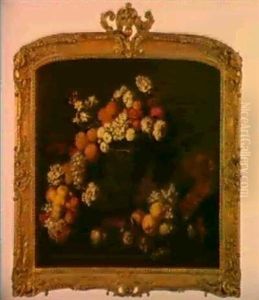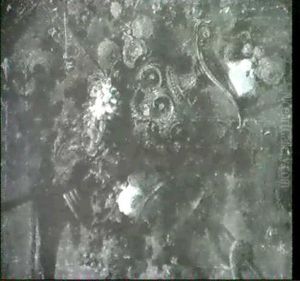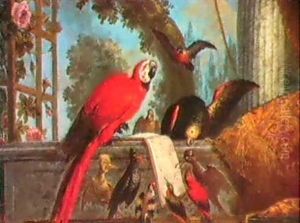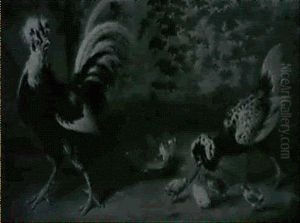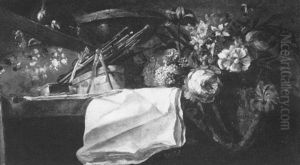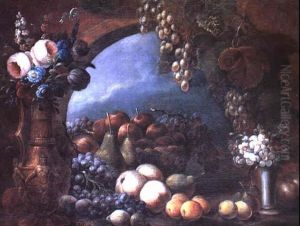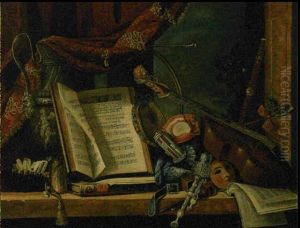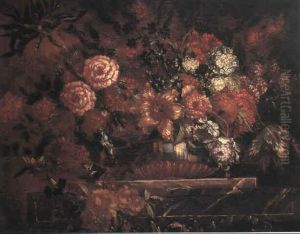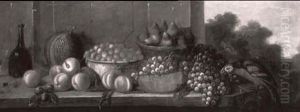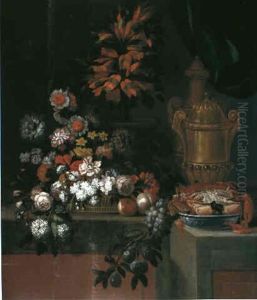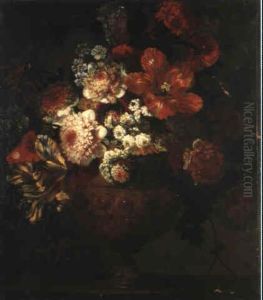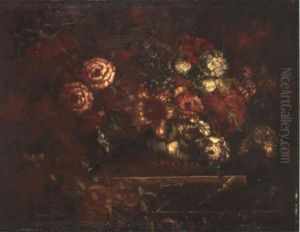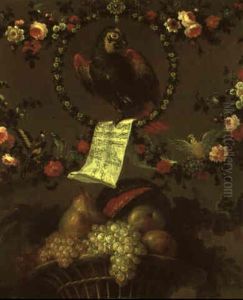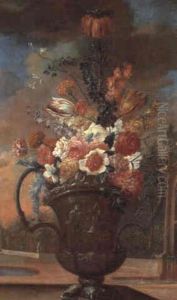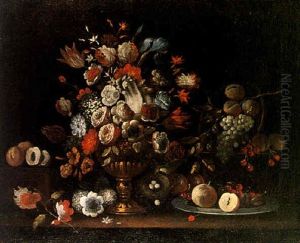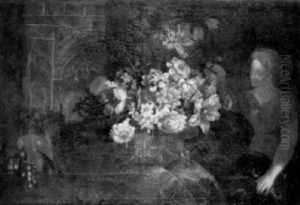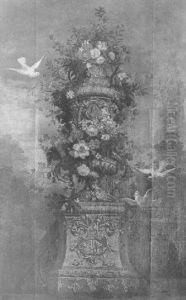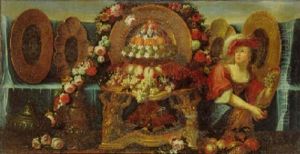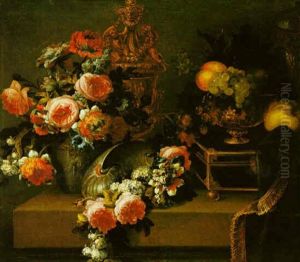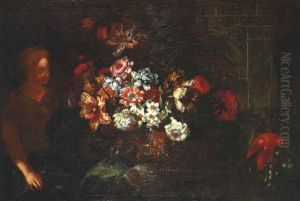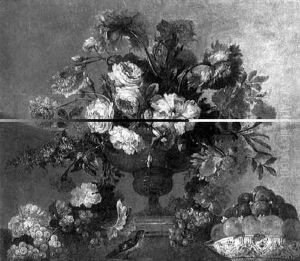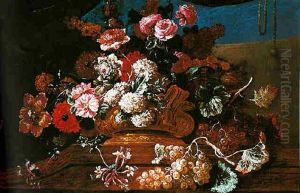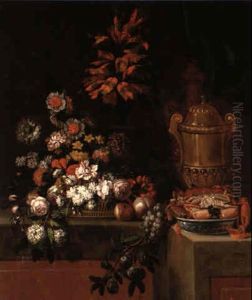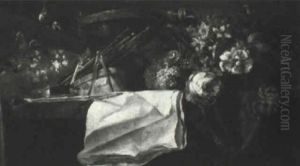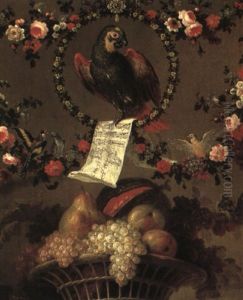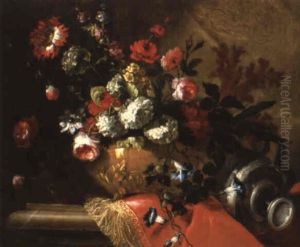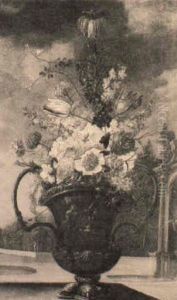Pierre Nicolas Huilliot Paintings
Pierre Nicolas Huilliot was a French painter and engraver born in 1674, whose work is often associated with the Rococo style, though he was also influenced by the earlier Baroque period. Huilliot's career flourished during a time when the French court, particularly under the reign of Louis XIV and subsequently Louis XV, highly valued the arts, leading to a flourishing of decorative and fine arts in France. His contributions are especially noted in the realms of still life and floral painting, genres that were immensely popular among the aristocracy and burgeoning bourgeoisie of the time.
Huilliot's artistic talents were recognized early on, and he received his training in the bustling art scene of Paris, which was then the epicenter of European art and culture. Although specific details about his mentors or the exact trajectory of his training are sparse, it is known that he became adept at capturing the intricate details of flowers, fruits, and objects d'art, imbuing his compositions with a vibrant sense of life and texture that was characteristic of the Rococo period's aesthetic preferences. His works often featured elaborate arrangements that went beyond mere representation, conveying a sense of abundance and luxury that appealed to his wealthy patrons.
Throughout his career, Huilliot enjoyed the patronage of the French nobility and even members of the royal family, who commissioned works from him for their opulent palaces and chateaux. His ability to portray the natural beauty of floral subjects, combined with a meticulous attention to detail and composition, made his paintings highly sought after for decorative purposes. They were often used as part of the interior design in the grand homes of the era, serving not only as artwork but also as symbols of wealth and taste.
Despite his success and the high regard in which his work was held during his lifetime, Pierre Nicolas Huilliot's name is not as widely recognized today as some of his contemporaries. This can be attributed to the shifting tastes in art and the eventual overshadowing of Rococo art by Neoclassicism later in the 18th century. Nevertheless, his contributions to the fields of still life and floral painting remain important, and his works continue to be appreciated by art historians and collectors for their beauty and historical value. Pierre Nicolas Huilliot passed away in 1751, leaving behind a legacy of artistic achievement that captures the essence of an era renowned for its refinement and decorative arts.
